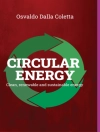Holographic Data Storage: From Theory to Practical Systems is a primer on the design and building of a holographic data storage system covering the physics, Servo, Data Channel, Recording Materials, and optics behind holographic storage, the requirements of a functioning system, and its integration into ‘real-life’ systems. Later chapters highlight recent developments in holographic storage which have enabled readiness for commercial implementation and discuss the general outlook for the technology, including the transition from professional to consumer markets and the possibilities for mass reproduction.
Table of Content
Foreword xv
Preface xvii
List of Contributors xix
1 Introduction 1
Kevin Curtis, Lisa Dhar and Liz Murphy
1.1 The Road to Holographic Data Storage 1
1.2 Holographic Data Storage 3
1.2.1 Why Now? 3
1.2.2 Focus of the Book 5
1.2.3 Other Examples of System using the In Phase Architecture 7
1.3 Holographic Data Storage Markets 8
1.3.1 Professional Archival Storage 8
1.3.2 Consumer Applications 11
1.4 Summary 14
Acknowledgements 14
References 14
2 Introduction to Holographic Data Recording 17
William Wilson, Alan Hoskins, Mark Ayres, Adrian Hill and Kevin Curtis
2.1 Introduction 17
2.2 Brief History of Holography 18
2.3 Holographic Basics 19
2.3.1 Introduction 19
2.3.2 Using Holography for Data Storage 22
2.4 Volume Holograms 24
2.4.1 Introduction 24
2.4.2 Kogelnik’s Coupled Wave Equations 25
2.4.3 k-Space Formalism 26
2.5 Multiplexing Techniques 31
2.5.1 Introduction 31
2.5.2 Bragg-Based Techniques 32
2.5.3 Momentum-Based Techniques 34
2.5.4 Correlation-Based Techniques 38
2.5.5 Combinations of Multiplexing Methods 40
2.6 Address Space Limitations on Holographic Densities 41
2.7 Summary 42
References 42
3 Drive Architectures 45
Kevin Curtis, Adrian Hill and Mark Ayres
3.1 Introduction 45
3.2 Collinear/Coaxial Architecture 45
3.2.1 Introduction 45
3.2.2 Coaxial Architecture 46
3.2.3 Collinear Architecture 48
3.3 In Phase Architecture 49
3.3.1 Introduction 49
3.3.2 Angle-Polytopic, Phase Conjugate Architecture (In Phase Architecture) 51
3.4 Monocular Architecture 54
3.4.1 Introduction 54
3.4.2 Monocular Implementation 56
3.4.3 Experimental System 58
3.4.4 Preliminary Experimental Results 59
Acknowledgements 61
References 62
4 Drive Components 65
Kevin Curtis and Brad Sissom
4.1 Introduction 65
4.2 Laser 65
4.2.1 Initial Tapestry Drive Laser Specification 66
4.2.2 Optical System Configuration 67
4.2.3 Electronics 69
4.2.4 Mode Sensor 69
4.2.5 Power Sensor 70
4.2.6 Wavelength Sensor 70
4.2.7 Characteristics of Optical Power and Tuning Range 71
4.2.8 Probability of Single-mode Operation 72
4.2.9 Laser Mode Servo 73
4.2.10 Lifetime of AR Coated Laser Diode 73
4.2.11 Future Developments 73
4.3 SLM 75
4.3.1 Introduction 75
4.3.2 Available SLM Technologies 76
4.3.3 Tapestry Drive SLM Specifications 77
4.3.4 Consumer SLM Specification 78
4.4 Image Sensor 79
4.4.1 Introduction 79
4.4.2 Tapestry Drive CMOS Sensor 80
4.4.3 Image Sensors for Consumer HDS 81
4.5 Beam Scanners 82
4.5.1 Introduction 82
4.5.2 Galvanometer 83
4.5.3 Mechanical Based Scanners 84
4.5.4 MEMs Scanners 85
4.5.5 Liquid Crystal Based Scanners 86
4.5.6 Acousto-Optic Beam Scanner 86
4.6 Isoplanatic Lenses 87
4.6.1 Introduction 87
4.6.2 Characteristics of Isoplanatic Lenses 88
4.6.3 Extremely Isoplanatic Holographic Storage Lens 88
4.6.4 Examples – Symmetric and Asymmetric Phase Conjugation 90
4.6.5 Lens Design Notes: Phase Conjugation and Extreme Isoplanatism 92
4.7 Polytopic Filter 94
4.7.1 Introduction 94
4.7.2 Current Polytopic Filter 95
4.7.3 Mechanical Filtering 96
4.7.4 Interference Filters 97
4.7.5 Thin Film Coating on Curved Surface 98
Acknowledgements 100
References 101
5 Materials for Holography 105
Kevin Curtis, Lisa Dhar and William Wilson
5.1 Introduction 105
5.2 Requirements for Materials for HDS 107
5.2.1 Index Change (M/#) 107
5.2.2 Dimensional Stability 107
5.2.3 Photosensitivity 110
5.2.4 Scatter 110
5.2.5 Absorption Properties 110
5.2.6 Birefringence 111
5.2.7 Optical Quality 111
5.2.8 Manufacturability 111
5.3 Candidate Material Systems 111
5.3.1 Photorefractive Materials 111
5.3.2 Photoaddressable Systems 113
5.3.3 Photochromic Systems 114
5.3.4 Photopolymer Systems 115
5.3.5 Other Materials 116
5.4 Summary 117
References 117
6 Photopolymer Recording Materials 121
Fred Askham and Lisa Dhar
6.1 Introduction to Photopolymers 121
6.1.1 The Holographic Recording Process 121
6.1.2 General Characteristics of Photopolymers 121
6.1.3 Tapestry Two-Chemistry Photopolymer Materials 123
6.2 Photopolymer Design 123
6.2.1 Host Matrix Systems of Photopolymers 123
6.2.2 Photoreactive System of Photopolymers 124
6.3 Holographic Recording in Photopolymers 127
6.3.1 Hologram Formation Through Diffusion in Photopolymers 127
6.3.2 General Use in a HDS System 127
6.4 Rewritable 130
References 132
7 Media Manufacturing 133
David Michaels and Lisa Dhar
7.1 Introduction 133
7.2 Tapestry Media Overview 133
7.2.1 Overview of Disk Structure 133
7.3 Media Manufacturing Process 135
7.3.1 Flow of the Manufacturing Process 135
7.3.2 Molding of Substrates 136
7.3.3 Anti-Reflection Coating 136
7.3.4 Hub and Inner Sealing 136
7.3.5 Bonding 137
7.3.6 Edge and Center Plug Sealing 140
7.3.7 Cartridging 141
7.4 Specifications for the Tapestry Media 142
7.4.1 Substrates 142
7.4.2 Recording Layer 145
7.4.3 Assembled Media 145
7.4.4 Media Performance and Characteristics 148
7.5 Manufacturing of Higher Performance Tapestry Media 148
Acknowledgements 148
References 149
8 Media Testing 151
Kevin Curtis, Lisa Dhar, Alan Hoskins, Mark Ayres and Edeline Fotheringham
8.1 Introduction 151
8.2 Plane Wave Material Testing 151
8.2.1 Introduction 151
8.2.2 Plane Wave Tester Set-up 152
8.2.3 Measurements and Analysis 154
8.2.4 Two Plane Wave Material Testing 157
8.3 Bulk Index Measurements 162
8.4 Scatter Tester 162
8.5 Spectrophotometers/Spectrometers 164
8.6 Scanning Index Microscope 165
8.6.1 Overview 165
8.6.2 System Layout 166
8.6.3 System Response 166
8.6.4 Experimental Example 168
8.7 Interferometers 170
8.8 Research Edge Wedge Tester 172
8.9 Defect Detection 174
8.10 Digital Testing of Media Properties 175
8.10.1 Scatter 175
8.10.2 Media Sensitivities and M/# Usage 176
8.10.3 Media Timing Tests 176
8.10.4 Media Termination Test 176
8.11 Accelerated Lifetime Testing 177
8.11.1 Introduction 177
8.11.2 Media Shelf Life Testing 177
8.11.3 Disk Archive Testing 178
8.11.4 Edge Seal Testing 181
Acknowledgements 182
References 182
9 Tapestry Drive Implementation 185
Kevin Curtis, Ken Anderson, Adrian Hill and Aaron Wegner
9.1 Introduction 185
9.2 Optical Implementation 188
9.2.1 Architecture 188
9.2.2 Field Replaceable Unit (FRU) 190
9.2.3 Shutter 191
9.2.4 Optical Divider 192
9.2.5 Data Path 194
9.2.6 Reference Path 196
9.2.7 Cure System and Toaster 199
9.3 Mechanical Implementation 200
9.3.1 Loader 200
9.3.2 Cooling 200
9.3.3 Integrated Vibration Isolation System and Sway Space 201
9.4 Electronics and Firmware 202
9.4.1 Electronics 202
9.4.2 Firmware 205
9.5 Basic Build Process 209
9.5.1 Overview 209
9.5.2 Drive Alignment for Interchange 212
9.6 Defect Detection 214
9.7 Read and Write Transfer Rate Models 216
9.7.1 Simple Write Transfer Rate Model 217
9.7.2 Simple Read Transfer Rate Model 217
9.8 Summary 219
Acknowledgements 220
References 220
10 Data Channel Modeling 221
Lakshmi Ramamoorthy, V. K. Vijaya Kumar, Alan Hoskins and Kevin Curtis
10.1 Introduction 221
10.2 Physical Model 222
10.2.1 Introduction 222
10.2.2 Details of Model 223
10.2.3 Quality Metrics for the Model 225
10.2.4 Implementation Details and Effects of Parameter Variations 227
10.3 Channel Identification 237
10.3.1 Introduction 237
10.3.2 Comparison of Linear and Nonlinear Channel Identification 239
10.4 Simple Channel Models 241
10.4.1 Amplitude Model 242
Acknowledgements 244
References 245
11 Data Channel 247
Adrian Hill, Mark Ayres, Kevin Curtis and Tod Earhart
11.1 Overview 247
11.2 Data Page Formatting 248
11.2.1 Sync Marks 249
11.2.2 Headers (Bar Codes) 249
11.2.3 Reserved Blocks 250
11.2.4 Border Regions 250
11.2.5 Data Interleaving 250
11.2.6 Modulation 252
11.3 Data Channel Metrics 252
11.3.1 Signal to Noise Ratio 253
11.3.2 Centroid Calculation 254
11.3.3 Intensity Metrics 255
11.3.4 Signal to Scatter Ratio 255
11.4 Oversampled Detection 256
11.4.1 Introduction 256
11.4.2 Resampling Process 257
11.4.3 Alignment Measurement Method 261
11.4.4 Experimental Results 264
11.5 Page Level Error Correction 265
11.5.1 Log Likelihood Ratio 265
11.5.2 Page Level ECC 267
11.6 Fixed-Point Simulation of Data Channel 268
11.7 Logical Format 272
11.7.1 Introduction 272
11.7.2 Terminology 274
Acknowledgements 276
References 277
12 Future Data Channel Research 281
Mark Ayres and Kevin Curtis
12.1 Introduction 281
12.2 Homodyne Detection 281
12.2.1 Introduction 281
12.2.2 Local Oscillator Generation 284
12.2.3 Quadrature Image Pairs 285
12.2.4 Estimating Phase Difference Dw(x, y) 287
12.2.5 Quadrature Image Combination 290
12.2.6 Quadrature Image Resampling 292
12.2.7 Coherent Noise Linearization 293
12.2.8 Simulation Results 294
12.2.9 Phase Sensitivity Issues 296
12.2.10 Local Oscillator and Hologram Alignment 297
12.2.11 Adaptive Homodyne Detection 298
12.3 Phase Quadrature Holographic Multiplexing 300
12.3.1 Phase-Quadrature Recording 300
12.3.2 Phase-Quadrature Recovery 302
12.3.3 Reserved Block Equalization 302
12.3.4 Simulation of Phase-Quadrature Decoding 303
12.3.5 Summary of Improvements 303
12.4 Other Research Directions 304
Acknowledgements 304
References 305
13 Writing Strategies and Disk Formatting 307
Kevin Curtis, Edeline Fotheringham and Paul Smith
13.1 Introduction 307
13.2 Media Consumption 308
13.2.1 Introduction 308
13.2.2 Minimizing the Hologram Size 308
13.2.3 FT Lens Design 309
13.2.4 Phase Mask 311
13.2.5 Short Stacking 314
13.2.6 Skip Sorted Recording Within and Between Tracks 316
13.2.7 Angular Scheduling of Holograms in a Book 318
13.2.8 Angular Fractional Page Interleaving 318
13.3 Scheduling and Write Pre-compensation 320
13.3.1 Introduction 320
13.3.2 Basic Scheduling 320
13.3.3 Pre-cure Calibration 322
13.3.4 Write Pre-compensation Process 325
13.3.5 Thermal Effects on Schedule 327
13.4 Media Formatting 329
13.4.1 Introduction 329
13.4.2 Considerations 329
13.4.3 Format Types with Examples 331
13.4.4 Format Files 335
Acknowledgements 336
References 336
14 Servo and Drive Control 339
Alan Hoskins, Mark Ayres and Kevin Curtis
14.1 Introduction 339
14.2 Holographic System Tolerances 340
14.2.1 Introduction 340
14.2.2 Experimental and Modeled Tolerances 343
14.2.3 Tolerance Summary 350
14.2.4 Tolerance Analysis 351
14.3 Algorithms 353
14.3.1 Introduction 353
14.3.2 Theory of Thermal and Pitch Compensation 354
14.3.3 Dither Align 358
14.3.4 Wobble Servo 360
14.3.5 Other Algorithms 363
14.4 Drive Controls 363
14.4.1 Introduction 363
14.4.2 Record Operation 363
14.4.3 Read Operation 366
14.4.4 Interchange Operation 368
14.4.5 Locating Page 0 369
Acknowledgements 371
References 371
15 Holographic Read Only Memories 373
Ernest Chuang and Kevin Curtis
15.1 Introduction 373
15.2 System Design Considerations 375
15.3 Reader Design 377
15.3.1 Optics and Optomechanics 377
15.3.2 Drive Mechanism 378
15.3.3 Mirror Design and Control 378
15.3.4 Electronics 380
15.3.5 Camera Development 380
15.3.6 Power Consumption 381
15.3.7 Data Channel 381
15.4 Media Design 383
15.5 Two-Step Mastering 385
15.6 Mastering and Replicating Disk Media 390
15.7 Sub-mastering System 392
15.8 Mastering System 393
15.9 Replicating System 394
15.10 Margin Tester System 394
15.11 Experimental Results 395
15.12 Asymmetric Phase Conjugation 396
15.13 Non Fourier Plane Polytopic Filter Designs 397
15.14 Cost Estimates 398
15.15 Product Roadmap 398
15.16 Summary and Future Improvements 399
Acknowledgements 400
References 400
16 Future Developments 403
Kevin Curtis, Lisa Dhar, Liz Murphy and Adrian Hill
16.1 Technology Evolution 403
16.1.1 Archive Drive and Media Evolution 403
16.1.2 Monocular and Holographic Read Only Memory (HROM) Drives 404
16.1.3 Breakthrough Developments 405
16.2 New Applications 405
16.2.1 Archival Storage Market including Near Online Storage 405
16.2.2 Content Addressable Storage 406
16.2.3 Back-Up Application 407
16.2.4 Fixed Disk Applications 407
16.2.5 New Markets 407
16.3 Summary 408
References 408
Index 409
About the author
Kevin Curtis is the author of Holographic Data Storage: From Theory to Practical Systems, published by Wiley.
Lisa Dhar is the author of Holographic Data Storage: From Theory to Practical Systems, published by Wiley.
Adrian Hill is the author of Holographic Data Storage: From Theory to Practical Systems, published by Wiley.
William Wilson is the author of Holographic Data Storage: From Theory to Practical Systems, published by Wiley.
Mark Ayres is the author of Holographic Data Storage: From Theory to Practical Systems, published by Wiley.












